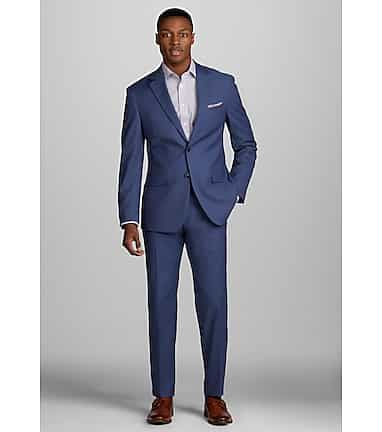Recognizing the Tailoring Process: From Textile Selection to Last Suitable for the Suitable Wardrobe
The tailoring procedure is a complicated interplay of art and science, beginning with the important decision of fabric option and culminating in the precise adjustments of last installations. Each fabric type brings unique qualities that affect not only the visual appeal however also the garment's longevity and suitability for numerous events. Recognizing the subtleties of customizing methods can raise one's closet to extraordinary degrees of sophistication. As we explore these aspects better, one need to consider exactly how also the smallest details can considerably influence the total end result of one's personal design.
Value of Fabric Choice
Choosing the right fabric is vital in the customizing process, as it directly influences the comfort, durability, and general aesthetic of the final garment. The choice of fabric sets the structure for the garment's efficiency, functionality, and style. Different materials possess one-of-a-kind homes, such as breathability, stretch, and weight, which can considerably affect exactly how the garment drapes and fits the body.

A tailored piece made from a suitable fabric not only showcases workmanship yet additionally boosts the wearer's confidence. Comprehending the subtleties of material choice is extremely important for any type of customizing undertaking. It guarantees that the end product not just satisfies the aesthetic desires of the client however likewise straightens with functional demands, therefore achieving an unified equilibrium in between kind and function in the customized closet.
Kinds Of Fabrics and Their Usages
Comprehending the various kinds of materials available is important for making notified choices throughout the customizing procedure. Each material has one-of-a-kind features that dictate its suitability for specific garments and celebrations.
Cotton, known for its breathability and soft qualities, is suitable for sportswear and summer season clothes. Its versatility permits it to be customized right into every little thing from t-shirts to gowns. Woollen, on the other hand, is preferred for its heat and framework, making it a superb choice for official suits and outerwear. Its all-natural flexibility aids garments keep form gradually.
Silk exhibits luxury and is lightweight, making it ideal for eveningwear and fragile shirts; nevertheless, it calls for careful handling because of its fragility. Bed linen, with its distinctive finish, is a prominent choice for warm climates, supplying a crisp and ventilated feeling, but it wrinkles quickly, which might influence the garment's look.
Artificial fabrics, such as polyester and nylon, deal longevity and resistance to creases, making them suitable for daily wear and active clothes. Understanding these textile types and their residential or commercial properties enables better decision-making, guaranteeing that each tailored piece not just fits well but also aligns with the designated function and event.
The Tailoring Methods Discussed
The art of customizing relies upon a range of methods that transform textile right into well-fitted garments. Central to this process is pattern composing, where a tailor develops layouts based on the customer's measurements and desired style. This preliminary action makes sure that the garment will certainly fit the wearer effectively before any reducing happens.
As soon as patterns are established, reducing strategies enter play. Precision is critical as mistakes can result in misfitting garments. Tailors usually use various reducing approaches, such as single-layer reducing for elaborate designs and multiple-layer reducing for effectiveness on conventional patterns.
Basting is one more crucial technique, enabling tailors to briefly sew fabric items together for an initial fitting (wedding suits perth). This approach provides the opportunity to evaluate the drape and overall silhouette before final sewing
Seaming methods, including flat-felled seams and French joints, enhance the garment's durability and visual appeal. Tailors additionally use strategies Discover More such as interfacing and cushioning to offer structure and shape to certain areas, like collars and shoulders.
Lastly, ending up techniques, consisting of hemming and side finishing, make certain the garment's durability while offering a polished look. Together, these methods create the backbone of effective tailoring, resulting in elegant, custom-fit garments.

Fitting Modifications and Factors To Consider
After the first customizing techniques have actually been used and the garment is constructed, suitable changes come to be paramount to accomplishing the perfect fit. These adjustments address various elements of the garment, guaranteeing it contours to the wearer's physique and enhances overall appearance.
The surge of pants is another important element; it ought to rest pleasantly above the hips without causing pain, allowing for ease of activity. Hemming lengths for both trousers and skirts need to show the wearer's recommended style while respecting check this percentages.
Moreover, focus needs to be offered to the back of the garment, ensuring that there are no unpleasant pulls or excess material - tailor tuxedos perth. Each modification ought to be thoroughly taken into consideration, as even minor changes can considerably influence the overall fit and aesthetic of the customized piece, eventually resulting in a wardrobe that emanates confidence and class
Maintaining Your Tailored Clothing
Constantly adhere to the care tag instructions, which might recommend completely dry cleaning for delicate textiles or machine cleaning for more long lasting products. Stay clear of frequent laundering, as this can use down the textile and modify the garment's shape.
Storage is equally crucial; use cushioned wall mounts for coats and coats to preserve shoulder framework, and store pants folded up nicely or hung to stop creasing. Secure garments from direct sunshine, which can fade shades and damage fibers.
In addition, periodic inspections for small repair services can avoid larger problems. Look for loosened switches, fraying joints, or signs of moth damages, dealing with these problems without delay to preserve the garment's stability.
Lastly, take into consideration seasonal turning. Using customized items in moderation permits materials to recover, prolonging their lifespan. By implementing these upkeep methods, you can ensure that your like this customized garments stay as beautiful as the day you initially used them, improving your suitable wardrobe for years to come.
Conclusion
The tailoring process, including fabric option, competent techniques, and exact fitting adjustments, plays a critical role in producing garments that boost both comfort and style. Recognizing the significance of upkeep expands the life of tailored garments, solidifying their worth in a well-curated closet.